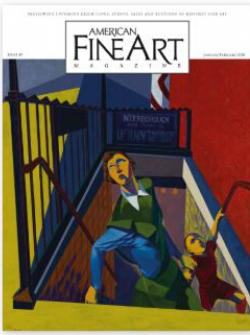 American Fine Art Magazine
American Fine Art Magazine
James D. Balestrieri
Thomas Moran and Thomas Cole spent their early years in the same small city in England: Bolton. Their parents worked in the weaving trade—Moran’s family specialized in textile designs; the Coles were known as fine weavers. Bolton was a hive of cottage industries. But the invention of textile mills transformed the city in a few short years. As children, Moran and Cole would have seen the undying fires of the mills and breathed in the fug of billowing smoke. They witnessed their parents’ craft—their art and livelihoods—made superfluous. Their parents took jobs in the mills that required them to work long hours for little money in oppressive conditions. The mills might have controlled Bolton, but poverty reigned. In response Ned Ludd and his Luddites rose in armed, bloody rebellion. It was enough to make any impressionable child become an adult who lights out for the wilderness.
Author Ray Bradbury wrote, “You must stay drunk on writing so reality cannot destroy you.” Substitute painting for writing, and you have some idea of what I am thinking, not only about Moran and Cole’s responses to the dehumanizing effects of industrial Britain, but about the birth of modern horror, fantasy and science fiction (hence the Bradbury quote) that runs alongside the romantic, transcendental turn to nature in philosophy and the arts. In fact, I would argue that the weird, as exemplified by, say, Poe and Hawthorne, and the deism of, say, Ruskin and Thoreau, are two sides of the same coin, two opposite aesthetic responses to the same cataclysmic shift in scale from human-centered to machine-centered.